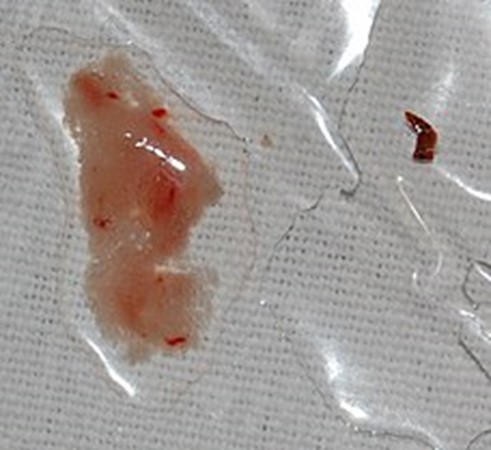A 2-week-old infant is seen in the well-baby clinic. As a nurse is assessing the client, which finding would present as a sign of congenital hip dysplasia?
Examining for the presence of any flexion of the hips when the infant is lying on the abdomen.
Extension of the legs while stimulating the infant to exhibit the stepping reflex.
Negative Babinski reflexes of both feet.
Asymmetrical gluteal folds and unequal leg length.
The Correct Answer is D
Choice A rationale:
Examining for the presence of any flexion of the hips when the infant is lying on the abdomen is a method to assess for Ortolani and Barlow signs, which indicate hip dislocation, not hip dysplasia.
Choice B rationale:
Extension of the legs while stimulating the stepping reflex is a normal developmental response and is not specific to hip dysplasia.
Choice C rationale:
The Babinski reflex is related to neurological development and not directly linked to hip dysplasia.
Choice D rationale:
Asymmetrical gluteal folds and unequal leg length are common findings in congenital hip dysplasia. Hip dysplasia involves improper formation of the hip joint, leading to instability and deformity of the hip socket, which can result in these physical characteristics.
Nursing Test Bank
Naxlex Comprehensive Predictor Exams
Related Questions
Correct Answer is A
Explanation
Choice A rationale:
Priority consideration should be given to the child's intolerance of strangers, as it directly impacts the child's safety and comfort in the hospital environment.
Choice B rationale:
Increasing modesty is a normal developmental aspect, but it doesn't take precedence over safety concerns or the immediate hospital care needs.
Choice C rationale:
Having imaginary companions is a common behavior in children and is not an immediate priority in planning care.
Choice D rationale:
While the child's preference for others making decisions might be a consideration, it is not as urgent as addressing the child's intolerance of strangers, which can affect the child's emotional well-being and cooperation during hospitalization.
Correct Answer is B
Explanation
Choice A rationale:
Meconium ileus is a concern in newborns with cystic fibrosis due to thick meconium, which can cause intestinal obstruction. At 16 years old, this complication is not relevant to the client's current condition.
Choice B rationale:
Blood-streaked sputum is a likely finding in a 16-year-old with cystic fibrosis and decreased pulmonary function. Cystic fibrosis leads to mucus accumulation and lung infections, which can cause blood vessels to rupture, resulting in blood-streaked sputum.
Choice C rationale:
Clear breath sounds bilaterally indicate healthy lung function, which is not expected in a client with cystic fibrosis and decreased PFT results. Breath sounds are likely to be diminished due to mucus accumulation.
Choice D rationale:
Dyspnea, or difficulty breathing, is a common symptom in clients with cystic fibrosis and decreased pulmonary function. However, the question asks about the expected findings that the nurse should assess, not a symptom that the client might report.

Whether you are a student looking to ace your exams or a practicing nurse seeking to enhance your expertise , our nursing education contents will empower you with the confidence and competence to make a difference in the lives of patients and become a respected leader in the healthcare field.
Visit Naxlex, invest in your future and unlock endless possibilities with our unparalleled nursing education contents today
Report Wrong Answer on the Current Question
Do you disagree with the answer? If yes, what is your expected answer? Explain.
Kindly be descriptive with the issue you are facing.
